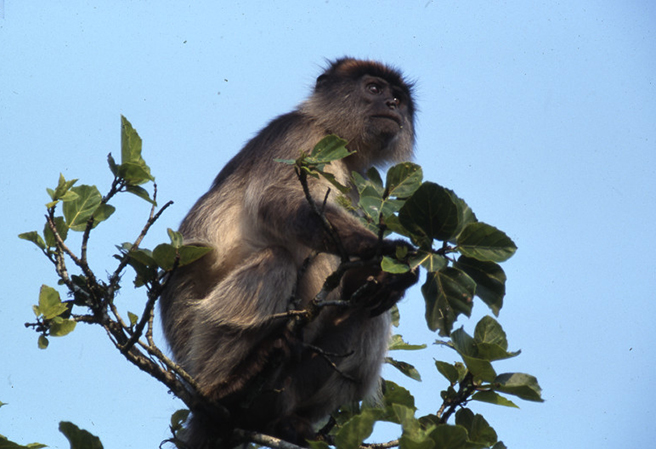The Mysterious Niger Delta Red Colobus

Once believed to be a subspecies of the western red colobus, the Niger Delta red colobus was only discovered in 1993 and declared a full species in 2007.
The red colobus, endemic to the western Niger Delta and the upper canopies of this region’s forests, is now considered one of the most elusive and critically endangered primates in Africa. It shares its habitat with a diverse range of other primates, from chimpanzees to other colobus subspecies.
Unlike other red colobus populations, this Niger Delta species spends a large portion of its day traveling. It relies strongly on a diet of young leaves and leaf buds, supplemented with seeds, flowers, and flower buds in the upper canopy.
It’s up here, though, that the red colobus must always remain alert for its main predator—the crowned eagle, a fearsome raptor whose nests have been found to contain the skulls of the medium-sizes primates.
Not much is known about the colobus beyond its tendency to travel in large family groups of about 15 to 80 members. Most groups contain two or more males, with females spending a majority of their time grooming others within the group.
With population estimates hovering around 500—due in large part to an 80 percent decrease over the past 30 years—the Niger Delta red colobus faces environmental pressures from deforestation, crude oil harvest, the bushmeat trade, and a lack of government protection, with its swampy habitat bearing the brunt of massive oil spills and logging incursions. The species was recently listed in The World’s Top 25 Most Endangered Primates by the International Union for Conservation of Nature.
While its ecology and mating habits are still shrouded in mystery, various researchers have worked to pull back the veil to better protect this species and its environment.
One is Nigerian biologist Rachel Ashegbofe Ikemeh, who is additionally working to protect the Nigerian-Cameroon chimpanzee with grant support from AWF’s African Apes Initiative. “There is really nothing that can be compared to observing a large group of monkeys in the wild, feeding, playing, and scurrying off from human view,” she said.
Pictured is a Ugandan red colobus. Photo: Craig Sholley